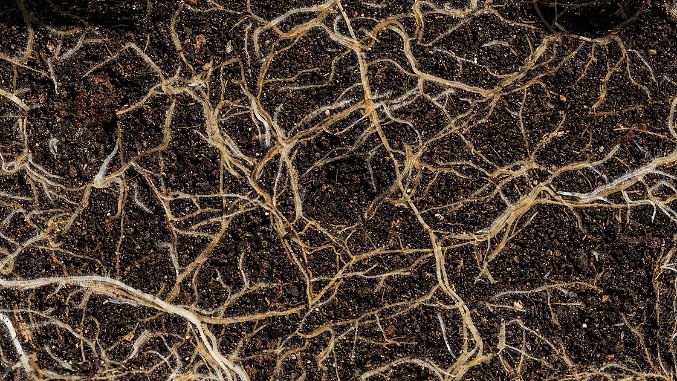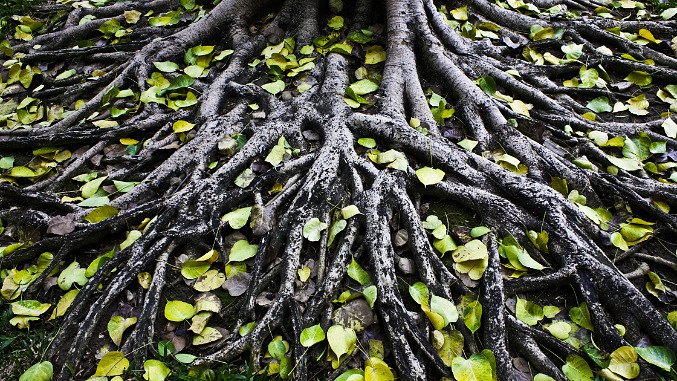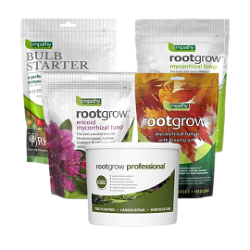
What is Mycorrhizal Fungi?
3 Minute Read
Mycorrhizal fungi naturally increases nutrient and water uptake in plants by forming a highly efficient secondary root system. Continue reading to find out more about this remarkable beneficial fungi.For millions of years, mycorrhizal fungi have benefitted over 80% of the planet's flora, they were the original root system of plants that allowed them to colonise the land after leaving the oceans, which has formed a close symbiotic relationship. During photosynthesis, mycorrhizae take sugars from plants in exchange for nutrients and moisture in the soil. The fungal strands of the mycorrhizae gather crucial elements and can extend and encompass vast volumes of soil. As a result, mycorrhizal fungi aid in combatting drought and unlocking nutrients in the most difficult of soil conditions.
Depending on the plant species and the mycorrhiza present, the fungus either colonises the plant root cell internally (known as arbuscular mycorrhiza or AMF/AM), or ‘sheaths’ the roots (known as ectomycorrhiza).

Mycorrhiza acts as an extension of the plants root system and plays a vital role in nutrition, soil biology and soil chemistry. This remarkable fungus can create a vast underground system within external roots. Trees, for example, can have a wide range of fungi attached to its roots, creating a complex underground system that links trees together with a vast network of channels.
Our forest ecosystem relies heavily on the underground network in our soils for growth and overall health, this network has been dubbed the wood-wide-web, in reference to the world-wide-web that connects us together humans in the modern day.
Our forest ecosystem relies heavily on the underground network in our soils for growth and overall health, this network has been dubbed the wood-wide-web, in reference to the world-wide-web that connects us together humans in the modern day.
How to use Mycorrhizal fungi:
• Sprinkle a small amount of the mycorrhizal fungi onto the root or planting zone (the area where the plant will be situated) in both open ground or containers, depending on preference.
• Ensure the root zone is in contact with the mycorrhizal fungi, backfill with soil to cover the roots, and water as usual.

Facts about mycorrhizal fungi:
• You only need one application to positively benefit your plants and garden.
• Planting wildflowers can help to initiate mycorrhizal associations in established trees.
• Mycorrhizal fungi assist plants in fighting root and foliar diseases. For example, many apple growers notice a decrease in apple scab disease in crops with established mycorrhizal associations.
• Phosphate-rich fertilisers, which are frequently used in gardens and agriculture, can prevent mycorrhizal fungi from forming links with plants when overused. So look out for fertilisers containing phosphates if you're planning on using beneficial mycorrhizal fungi.
• Most trees, shrubs and edible plants, with the exception of brassicas (Brussel sprouts, broccoli and cauliflower), can benefit from mycorrhizal fungi, including ericaceous plants via ericoid mycorrhiza.
• You only need one application to positively benefit your plants and garden.
• Planting wildflowers can help to initiate mycorrhizal associations in established trees.
• Mycorrhizal fungi assist plants in fighting root and foliar diseases. For example, many apple growers notice a decrease in apple scab disease in crops with established mycorrhizal associations.
• Phosphate-rich fertilisers, which are frequently used in gardens and agriculture, can prevent mycorrhizal fungi from forming links with plants when overused. So look out for fertilisers containing phosphates if you're planning on using beneficial mycorrhizal fungi.
• Most trees, shrubs and edible plants, with the exception of brassicas (Brussel sprouts, broccoli and cauliflower), can benefit from mycorrhizal fungi, including ericaceous plants via ericoid mycorrhiza.


Shop Rootgrow mycorrhizal fungi
We stock a wide range of mycorrhizal fungi for use on various plant species including, ericaceous blends, bulb blends and more. Also available in various application sizes.VIEW ALL
Tags: Mycorrhizal fungi, Soil health
Comments (0)
Why not be the first to send us your thoughts?
